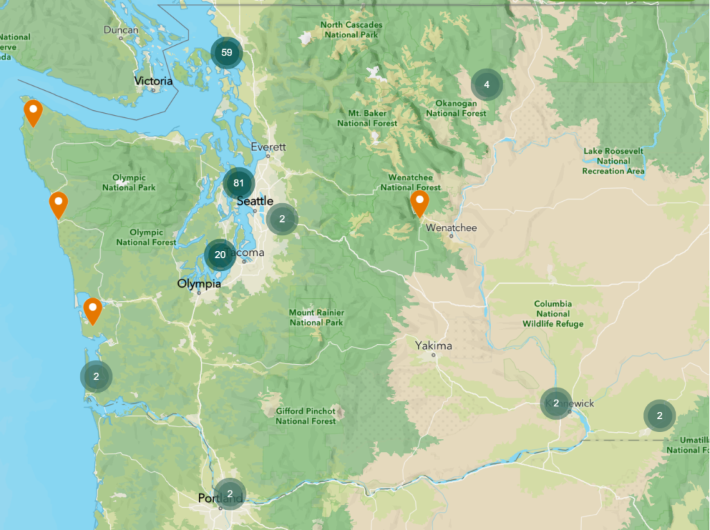Geographic overview of Washington
Washington state's geography is unique. On the southern boundary is the largest river on the West Coast, the Columbia River, which separates part of Washington from neighboring Oregon. On Washington's northern boundary is the large inland Salish Sea which extends to British Columbia, Canada. Washington is unique among the West Coast states because of the Salish Sea, which includes Puget Sound, separating the Olympic Peninsula from the rest of Washington state.
The Pacific Coast of Washington is shaped by currents, tides, weather, glaciers, and tectonic activity. It has several large bays, long sandy beaches, and large shallow mud flats home to much of the state’s shellfish aquaculture industry. The northern Pacific Coast also has many steep, forested cliff faces protected within the Olympic National Forest. The inland Salish Sea is filled with islands and pebbly beaches, and its shores are much more heavily urbanized than the Pacific Coast.
Washington’s long and diverse coastline supports healthy fisheries and aquaculture harvest. The cool temperature of the California and Alaska currents, the nearby continental shelf and river mouths make the coastline and inland waters of Washington a great place for many fish and invertebrate species to thrive. Though many of these species are also found in Oregon and California, some are found or grown only in Washington. Washington is a hub for seafood production and delivery, which requires major ports for the seafood industry.
Cooperative management
Commercial fishing and shellfish aquaculture activities have long occurred in Washington’s many rivers, bays, and marine waters. Many Treaty Tribes in Washington fish commercially as well as for subsistence and ceremonial purposes. Sovereign Treaty Tribes and Washington state cooperatively manage, or “co-manage”, some fisheries and shellfish harvest in the region. Tribal Natural Resource Departments and the Washington Department of Fish and Wildlife work in a government-to-government relationship to set seasons and quotas and recover depleted stocks. This ensures equitable harvest and the longevity and sustainability of fisheries and aquaculture resources. To learn more about fisheries co-management in Washington visit Northwest Indian Fisheries Commission and Washington Department of Fish and Wildlife.
Use the map below to help you locate some of the places you can purchase local Washington seafood. Explore dockside markets, seafood businesses with online ordering, restaurants and retailers that offer local seafood options.









